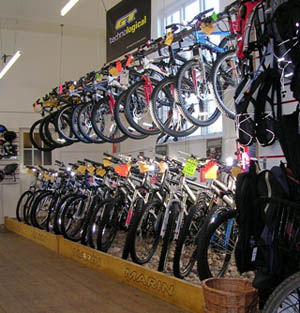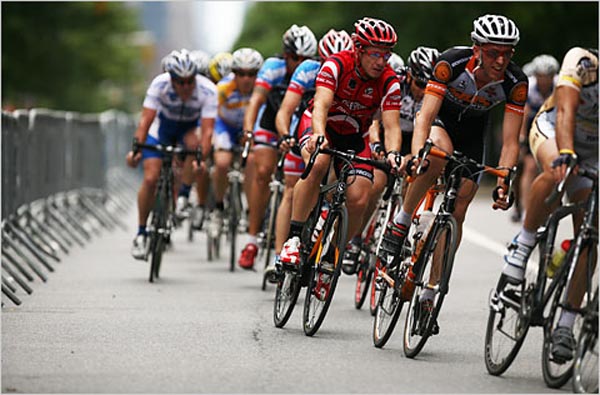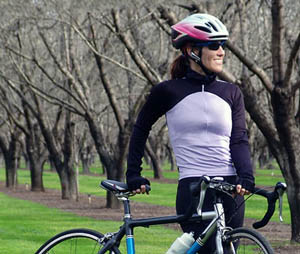
Everyone has seen a cyclist speed past them with custom water bottles and imprinted water bottles and ride straight through the intersection. Granted, it takes a lot of energy to slow down and stop and then to start again when riding a bicycle. But not obeying the rules of the road is certainly going to do more injury than the leg cramp you get from stopping at a red light. Here are some good tips on how to ride in the street or how to ride when there is a lot of traffic.
It doesn’t take much to stay safe and have fun on the streets, but there are some things you must pay attention to. Knowing the traffic laws in the state or province in which you are riding is of the utmost importance. This of course means knowing them and following them. Remember, although they may seem like they are holding you back, they have been put into place for you own protection.
First of all, you have to have enough strength to be able to ride the long distances and tricky terrain of the roads. You can build up your cycling strength not just by cycling , but by doing many other forms of exercise. Walking, running, swimming, hiking, and other sports can help prepare you for the long or strenuous bicycle ride. However, it is important to note that these exercises alone will not prepare you for serious cycling. Cycling requires that your muscles learn to move in different ways and requires different muscle sets than other sports or activities. Riding long distances is even harder. You have to be very aware of the caloric and nutritional intake you are engaging in. Your body will have to adapt slowly to different amounts of energy input and output. Increase the distance you ride everyday, but only by a fraction, otherwise your body will not adjust properly and you will find yourself in pain or burnt out. Try to cycle every day, or as often as possible, make time for cycling and you will be rewarded with the ability to cycle far.
Handling abilities are also a critical part of riding your bicycle in traffic, and should not be underestimated. You need to be able to ride in a straight line, as cars will often pass you with only a couple feet to spare, and most drivers will honk if they see a bicycle swerving too much. Tricks are a great way of learning bike handling skills. Those who rode as children have a great advantage over latecomers. Practice riding around obstacles, staying in a straight line, mounting, dismounting, slowing to a near stop and then accelerating, and maintaining a straight line while glancing behind. If this latter one proves difficult, as it usually does, many rider find a good solution in mirrors, which can be found at most cycling stores and can be fitted to the handlebars or the helmet. To stay safe in traffic, make sure you are prepared mentally and physically, obey the laws, avoid traffic whenever possible, maintain visibility, and be aware of what is going on around you at all times.


